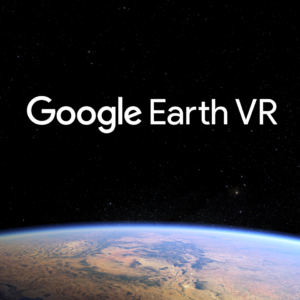

View Case Study
Google Earth VR lets you explore the world from totally new perspectives in virtual reality.
The world has so many beautiful and amazing places to visit. If we're lucky, we're able to travel and see a few of them. But even the most active travelers can only see a fraction. What if we could see them all?
In 2015, our team at Google embarked on a 2 year journey to bring together the world-scale imagery of Google Earth with the depth and immersion of virtual reality. Previous versions of Earth were limited to a small viewing window, but none of them gave you the experience of being there. We wanted people to re-live memories of their childhood homes, visit places that they have never visited, and experience the world from impossible perspectives.
What made bringing a good user experience to virtual reality so hard was the sheer scale of the Earth, human perception challenges, and the lack of existing design patterns. Designing for consistency regardless of where the user is on Earth meant our solutions had to be procedural. Moving users around the virtual world induced a form of nausea called simulation sickness, so we had to invent locomotion techniques that considered human physiology. Designing 2D interfaces in a 3D world meant considering distance in addition to angular size for comfort and legibility. Finally, creating a believable and immersive environment meant crafting a rich ambient soundscape, playing with the right haptic vibrations, and introducing physics to interactions.
Through extensive cross-functional prototyping, cognitive walkthroughs, and usability testing of our hypotheses, we were able to create an powerful and intuitive exploration experience that appeals to both avid gamers and VR novices alike. Our insights on Earth VR have set the foundation for what makes a delightful, comfortable, and usable VR user experience and will inform future VR applications as the technology continues to mature.
- Why this project is worthy of a UX Award:
Google Earth VR is the first virtual reality experience to let users freely navigate the entire planet and demonstrates VR’s empathic ability to trigger memories and feel connected to the world.
Doing so was an immense challenge. In addition to the technical difficulty of rendering the entire earth fast enough keep players immersed, virtual reality required us to discard what we knew about screen-based design patterns, and interactions models. To design for VR, we had to dive deep into human ergonomics, physiology, and perception. Our team relied heavily on human-centered methodologies to ideate on and evaluate the usability of our product.
As a result, we have solved some of the toughest foundational UX challenges such as VR locomotion on a global scale, simulation sickness, and 3D interface design—which paves the way for new VR experiences to move and explore in virtual spaces.
In addition to usability, Google Earth VR is comfortable and delightful to use both sitting or standing, and engages your senses with beautiful landscapes, tactile feedback, and a rich adaptive soundscape that brings life to the virtual world.
Since our launch in November 2016, we have been amazed to see the positive response from the community and were thrilled to win the Lumiere Century Award for raising environmental awareness. We are excited to take this even further and collaborate with organizations like NASA to help inspire people to learn about things like climate change and take action to help preserve the Earth.
Finally, the success of Earth VR highlights a strong need for UX practitioners in the VR space. In such a nascent space where humans are more connected with technology than ever before, it was essential for our UX team to pioneer new interaction models and design guidelines for the future of computing.
- Submitted By: Google
See More 2017 Submissions >>